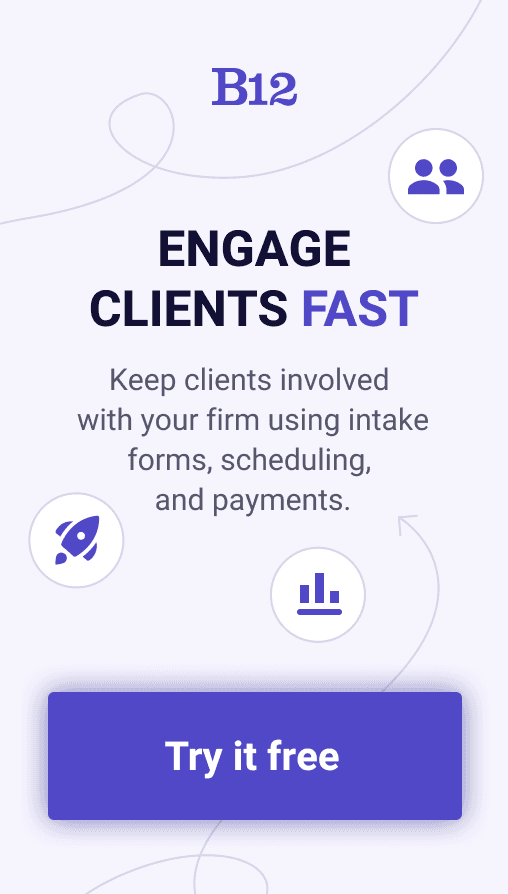Build an AI website in 60 seconds
AI generates your personalized website instantly with built-in scheduling, payments, email marketing, and more.
Start for free
The email marketing KPIs your small business should be tracking

Email marketing can be an incredibly effective technique for small business owners. With its potential for engaging with customers directly, email marketing can quickly bring in new leads and increase customer loyalty. In fact, 37% of marketers state that email is the most effective channel for retaining customers.
However, to be successful with email marketing, you need to measure its performance using key performance indicators (KPIs). When you track email marketing KPIs, you can learn what aspects of your strategy are working well. You can identify what needs to improve. Consequently, you can refine your approach to better achieve your goals.
In this blog post, we’ll explore the email marketing KPIs your small business should be tracking to ensure your campaigns are successful. Whether you’re a seasoned email marketer or a newcomer to the field, you’ll discover plenty of tips to help you take your small business email marketing campaigns to the next level.
Importance of KPIs for email marketing success
As a small business owner, you know the value of email marketing campaigns in driving conversions and engaging with customers. However, it's not just about crafting the perfect email content. Tracking and measuring your email performance using key performance indicators (KPIs) is crucial to the success of your email marketing campaigns.
Understanding email marketing metrics
Email metrics, such as the unsubscribe rate, bounce rate, or spam complaint rate, can help you gain insight into the effectiveness of your campaigns. This allows you to make data-driven decisions and improve overall ROI. For instance, spam complaints indicate problems with your campaign that you need to look at immediately. From open rates and click-through rates to conversion rates and revenue generation, analyzing key email performance metrics can provide insights into your customer behavior and preferences and ultimately, drive business growth.
Open rate KPIs
One of the most important KPIs to track in your email marketing efforts is your email open rate. This email marketing metric measures the percentage of people who opened your email after receiving it. By tracking open rates, you can determine if your email subject lines and preheader text are effective in capturing your audience's attention and enticing them to open your email. Tracking open rate KPI can help you identify areas for improvement in your email marketing campaigns.
Importance of tracking open rate KPI
By tracking your open rate KPI, you can learn which types of subject lines are resonating with your audience and optimize your future emails. For instance, if you notice that certain subject lines result in higher open rates, you can use similar language or themes in your future delivered emails to increase engagement.
Tips for improving open rates
To improve your open rates, consider experimenting with different subject lines that are attention-grabbing and relevant to your target audience. Personalization can also be a useful tactic in increasing open rates. You can also test the timing of your emails. See if sending them at a different time of day or day of the week results in higher open rates.
Examples of open rate KPIs
An open rate KPI benchmark varies depending on industry and business type. In general, an average open rate KPI is around 20%. However, top-performing email campaigns can have open rates as high as 40%. Keep in mind that different factors, such as your email list quality, audience engagement level, and email content, can all impact your open rate KPI.
Click-through rate KPIs
Another essential KPI to track in your email marketing campaigns is your click-through rate (CTR). The CTR measures the percentage of recipients who clicked on a link within your email. Tracking CTRs can help you understand if your email message and positioning are successful in driving traffic to your website or landing page. It helps you understand how engaged your subscribers are with your content. By analyzing CTRs, you can optimize your email content, including images, buttons, and links, to increase click-through rates and drive conversions.
Importance of tracking click-through rate KPI
By tracking CTR, you can identify which types of content are resonating with your subscribers and which are not. This data can help you refine your email campaigns and improve your marketing strategy. Tracking CTR also helps you optimize your email design and placement of call-to-action buttons for better engagement.
Tips for improving click-through rates
To improve your CTR, make sure your email design is clean and simple, with a clear and compelling call-to-action button. Use a personalized subject line that grabs the reader's attention and entices them to click through to your website or landing page. Make your content relevant and valuable. Use A/B testing to test different designs, subject lines, and calls to action to see what works best.
Examples of click-through rate KPIs
A good click-through rate depends on your industry and the type of email campaign. However, a benchmark for a successful email campaign is a CTR of between 2-3%. If your CTR is lower than this, it indicates that your content and/or design may need improvement. But what if your CTR is higher? Then it shows that your email campaign is resonating with your subscribers and that you're on the right track.
Conversion rate KPIs
The conversion rate KPI measures the percentage of recipients who complete a desired action after clicking on a link within an email. This action could be purchasing a product, signing up for a free trial, or filling out a survey. Tracking this KPI is essential to measure the success of your email campaigns and identify areas for improvement.
Importance of tracking conversion rate KPI
Converting email subscribers into customers or leads is the ultimate goal of any email marketing campaign. Tracking the conversion rate KPI allows you to assess how well your emails are performing in achieving this goal. By monitoring this KPI, you can determine which tactics are effective in driving conversions and optimize your email content accordingly.
Tips for improving conversion rates
To improve your conversion rates, consider implementing tactics such as personalization, segmentation, and clear call-to-actions (CTAs). Personalization can be achieved by using the recipient's name or providing content tailored to their interests. Segmenting your email list can also help you send targeted messages to specific audience groups. Clear and compelling CTAs that direct recipients to a specific landing page can also increase your conversion rates.
Examples of conversion rate KPIs
Conversion rate KPIs can include the percentage of recipients who completed a purchase, filled out a form, signed up for a trial, or booked a consultation. For example, let’s say you sent an email promoting a new product and 100 people clicked on the link to purchase. But only 10 completed the purchase. Then your conversion rate would be 10%. By tracking this KPI, you can determine which factors are affecting your conversion rates and adjust your approach accordingly.
List growth rate KPIs
Tracking your email list growth rate is an essential step in optimizing your email marketing strategy. This KPI provides insight into the health of your email list by measuring the increase or decrease of subscribers over a specified period.
What is list growth rate KPI
The list growth rate KPI measures the percentage change in your email subscriber list over a specific period. It is calculated by subtracting the number of unsubscribes and bouncebacks from the number of new subscribers and dividing the result by the number of total email subscribers.
Importance of tracking list growth rate KPI
Tracking your list growth rate KPI is crucial because it allows you to understand how effectively you are acquiring new subscribers and retaining existing ones. A high growth rate indicates that your marketing efforts are working, while a low growth rate may indicate the need for changes to your tactics.
Tips for improving list growth rates
To improve your list growth rate, consider using lead magnets, pop-ups, and incentives to encourage visitors to sign up for your email list. Additionally, make it easy for subscribers to share your content with their network and consider partnering with other businesses to expand your reach.
Examples of list growth rate KPIs
For example, if your email list had 1000 subscribers in January, and 100 new subscribers joined while 50 unsubscribed and 20 bounced back, your list growth rate KPI would be 3%. This calculation is based on the formula [(100-50-20)/1000] x 100, which yields a 3% growth rate. By tracking this KPI, you can establish a baseline and set goals for growth in future periods.
Revenue KPIs
Track your revenue KPIs to measure the bottom line of your email marketing strategy. By analyzing your revenue figures, you can determine whether your email campaigns are contributing to your business's financial growth. This KPI helps you measure your actual income generated by email marketing and compare it to the cost of creating and sending emails.
Importance of tracking revenue KPI
Revenue KPI is crucial for any small business since it provides a clear picture of how email campaigns generate profits. By tracking the revenue generated through email campaigns, you can find out which campaigns are financially viable and which ones need to be improved. Additionally, this KPI helps you identify the return on investment (ROI) of your email marketing campaign and determine whether you are achieving your business objectives.
Tips for improving revenue generation
To boost your revenue generation, try implementing strategies like email personalization, segmenting your email list, testing different email templates, and creating targeted content. You can also offer incentives to customers, such as exclusive discounts or free shipping, to entice them to purchase from your business. Continuously monitor your campaigns using revenue KPI, and use any insights gained from analysis to improve future campaigns.
Examples of Revenue KPIs
Revenue KPI can be measured in various ways, such as lifetime customer value, revenue per email sent, and revenue per customer. Lifetime customer value is the total revenue a customer generates for your business over their lifetime. Revenue per email sent is the amount of money generated per email sent to your email list. Revenue per customer is the total revenue of all purchases made by a single customer. By tracking these KPIs, you can gain insights into your business's revenue generation and improve your email marketing strategies.
Optimize your email workflows with B12
As a communication channel, email helps you reach out and attract potential clients. B12 makes it easier for you to engage prospects and build your client base through optimized email workflows.
Make a great first impression on leads and clients using B12. Send quality emails complete with your branding, from your logo and colors to font styles. Choose from pre-written templates and set up automated templates for more convenience. Get started today.
Attract, win, and serve more clients
Receive helpful resources directly to your inbox to help you succeed online.
Draft your site in 60 seconds
Get an AI website made specifically for you that's free to launch.
Start for free ✨No credit card required
Spend less time on your website and more time growing your business
Let B12 set up your professional online presence with everything you need to attract, win, and serve clients.




